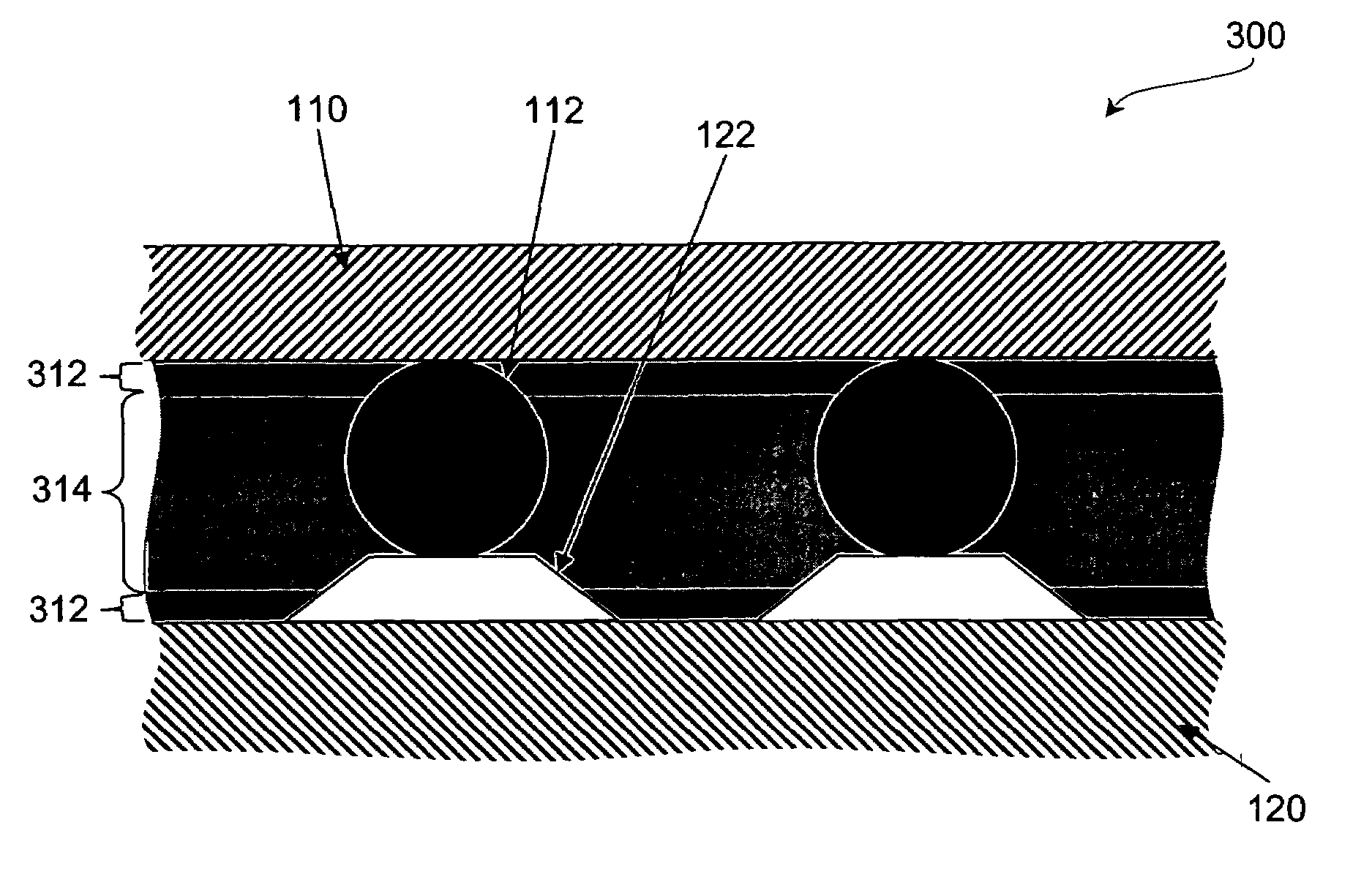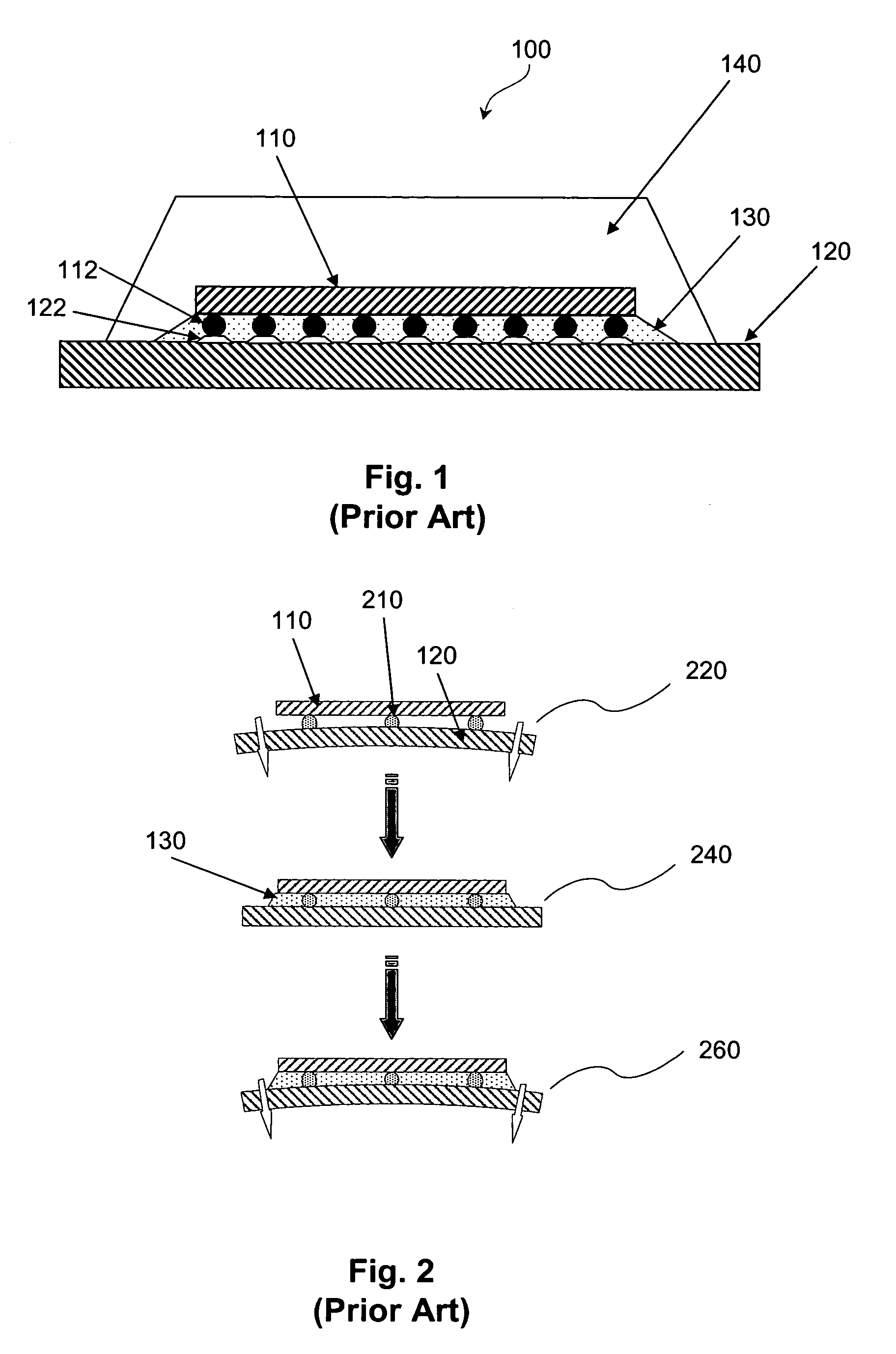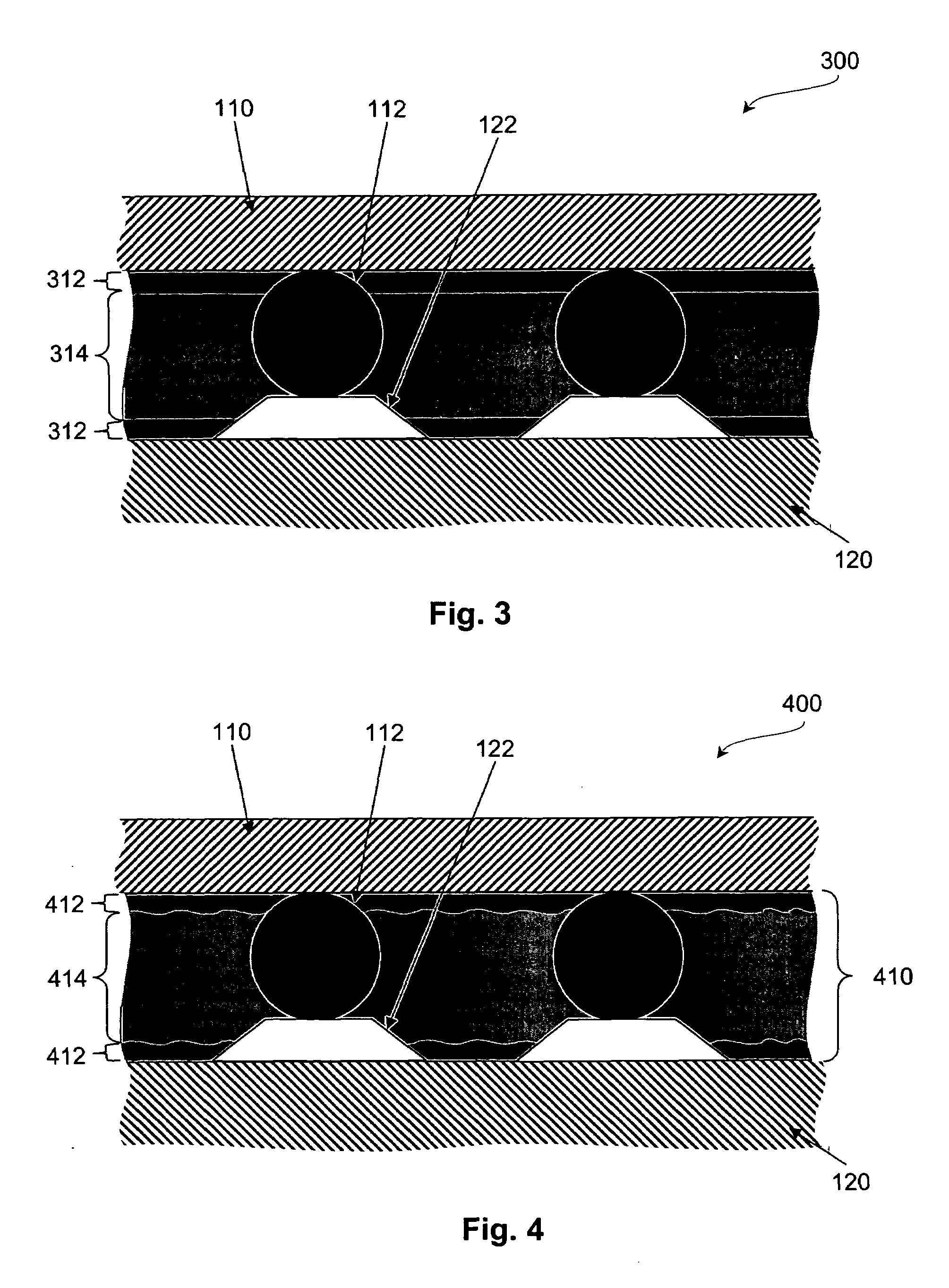Underfill for maximum flip chip package reliability
a flip chip and reliability technology, applied in the field of microelectronic technology, can solve the problems of increasing the power consumption of the chip, and increasing the complexity of the chip, so as to reduce cracking, and the effect of reducing the amount of chip shear
- Summary
- Abstract
- Description
- Claims
- Application Information
AI Technical Summary
Benefits of technology
Problems solved by technology
Method used
Image
Examples
Embodiment Construction
[0018]FIG. 1 shows a traditional FC package. A pattern of solder bumps or solder balls 112 is formed on one side of chip 110 that carries the integrated circuits (the bottom surface of chip 110). Chip 110 is flipped to the orientation shown in FIG. 1 and its pattern of solder bumps is aligned with the same pattern of solder pads 122 formed on substrate 120. Chip 110 is then lowered onto substrate 120 so that its solder bumps 112 contact solder pads 122 of substrate 120. Upon heating, the solder in bumps 112 and pads 122 flows together; and upon cooling, the solder forms solder joints that connect chip 110 to substrate 120. Then, underfill 130 and molding compound 140 are added to the package. As indicated above, the underfill typically is an epoxy-based polymer with a ceramic filler. The molding compound typically is silica-filled epoxy.
[0019]FIG. 2 is a schematic description of the thermomechanical deformation experienced by an organic substrate at different stages in an IC packagi...
PUM
 Login to View More
Login to View More Abstract
Description
Claims
Application Information
 Login to View More
Login to View More - R&D
- Intellectual Property
- Life Sciences
- Materials
- Tech Scout
- Unparalleled Data Quality
- Higher Quality Content
- 60% Fewer Hallucinations
Browse by: Latest US Patents, China's latest patents, Technical Efficacy Thesaurus, Application Domain, Technology Topic, Popular Technical Reports.
© 2025 PatSnap. All rights reserved.Legal|Privacy policy|Modern Slavery Act Transparency Statement|Sitemap|About US| Contact US: help@patsnap.com



